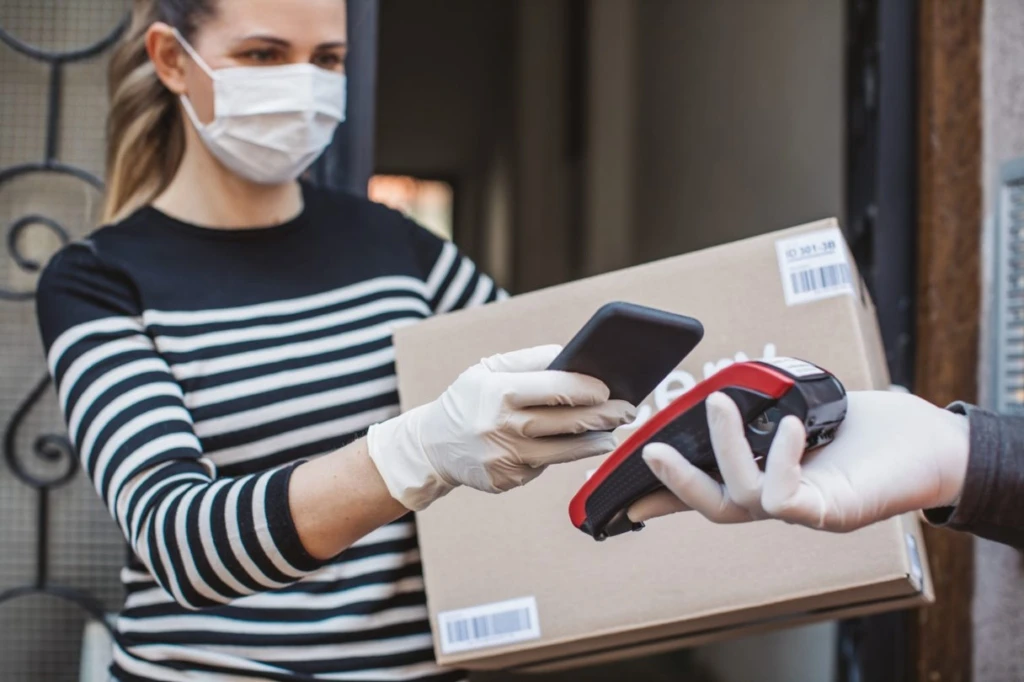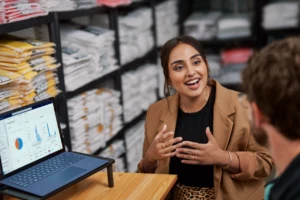
How retail success stories inform retail banking strategy

In the second part of our Q&A series with Deborah Weinswig, CEO and Founder of research and advisory firm Coresight Research, we discuss what retail banking can learn from retail’s worldwide success stories in getting through the depths of the Covid-19 crisis.
Read the first blog in the series, What retail banks can learn from retailers during COVID-19.
How did technology help retailers to rapidly adapt their services during the coronavirus pandemic?
Deborah: Most simply, retailers innovated by leveraging technology that was already widespread in their stores—namely, the smartphone. The concept of “bring your own device” originated for the workforce, but the crisis prompted it to become just as applicable to the consumer.
Contactless payments, whether through mobile apps or contactless cards, enjoyed an uptick in usage as shoppers turned to contact-free in-store options. Visa reported US contactless usage was up 150 percent year-over-year in March. To support demand for contact-free transactions, Mastercard announced a commitment to increasing the limits for contactless payments across 20 European countries. The greater convenience and reduced infection risk of contactless looks set to endure: In Coresight Research’s May 27 survey of US consumers, one-quarter of respondents said they expect to retain greater usage of contactless payment even after the crisis ends.
Retailers amplified contact-free options, including taking those options upstream from the point of payment to earlier stages in the shopping journey. In grocery, where in-store demand was strongest, Walmart deployed QR codes to make the checkout process for Walmart Pay contact-free; Wegmans rolled out a new self-scan app; and Kroger promoted app-based options including digital coupons, its “Scan, Bag, Go” service, and Kroger Pay.
Looking ahead in both retail and retail banking, we see consumers continuing to digitalize their brick-and-mortar experiences through their own devices. In Coresight Research’s weekly surveys, one of the top behaviors that US consumers expect to retain is having less physical interaction. On May 27, for example, 35 percent of US respondents told us they expected to reduce such interactions.
Like retailers, financial-services firms must make the smartphone a hub, to which any services or parts of processes that don’t require a physical presence can be migrated—whether that is making appointments (which are likely to be more essential in a social-distancing environment), fulfilling appointments (virtually), submitting financial-service requests, or partially completing transactions. Apps must move beyond being one-way dispensers of information to become key bidirectional contact points, while in-person banking activities can refocus on non-digitizable parts of the process.
How did retailers bridge the gap between the brick-and-mortar format and the digital channel?
Deborah: At their most nimble, retailers reallocated associate expertise from stores to digital channels, enabling them to maintain some continuity in service, while reducing staff furloughs. In the UK, department-store chain John Lewis, which has long been an omnichannel leader, launched free one-to-one video consultations for home design, personal styling, and nursery product purchases, provided by its (hitherto) in-store experts. Meanwhile, European electronics retailer Dixons Carphone launched similar video consultation services for selected products, with associates from its stores offering advice and product demos online; as its stores reopen, Dixons Carphone said that staff will continue to offer these digital services but from stores rather than from home.
Major names in retail also innovated to break down channels and serve demand from brick-and-mortar stores, even where those stores could not open their doors to shoppers. Some retailers deployed ship-from-store services to cater to heightened online demand: Urban Outfitters reported that it was able to fill more than 2 million digital shipments from its stores during the quarter ended April 30. Many names across discretionary retail launched or extended curbside-pickup services, allowing shoppers to collect online orders contact-free. These kinds of services accelerated the blurring of channels that we have seen in retail in recent years.
We see the following implications for retail banking:
- Firms should be prepared to allocate skilled and experienced staff to channels where they can serve customers. To do so at speed, financial-services firms must be sure they understand where those skills lie in the business, down to branch-level expertise.
- Financial-services firms must adopt a channel-agnostic approach with flexible working practices that allow that experience to be redeployed, and in turn to break down any internal company siloes where these prevent swift changes.
- Similarly, retail banks can explore whether some digital customer services can best be offered by in-branch staff rather than by centralized functions.
How did retailers adopt novel methods of digital interaction to help replicate in-store experiences?
Deborah: From apparel to automobiles, retailers and brands have deployed reality technologies to offer digital experiences and assist online shoppers in the decision-making process.
Fashion pure play ASOS scaled its size-and-fit feature “See My Fit” to offer shoppers customized views of up to 500 products each week. The tool, which was launched in collaboration with Israeli tech firm Zeekit in January 2020, allows shoppers to view the products on six real-life models to better see the cut and fit of apparel items. Elsewhere, Lamborghini used Apple’s augmented-reality technology to virtually launch its new car model, the Huracán EVO RWD Spyder, in May; lacking the option of a typical real-world launch, the brand brought the car to consumers’ streets and driveways in virtual form.
In an impressively rapid reaction to the coronavirus outbreak, Christian Dior launched its “Dior Maison” boutique, which provides a virtual experience of the brand’s flagship store on the Champs-Elysées in Paris. Dior launched the platform with experiential e-commerce platform company Obsess. Neha Singh, CEO and Founder of Obsess, told Coresight Research that since the start of the pandemic, the company has experienced a 300 percent increase in inbound inquiries, compared to the average from 2019.
Like retailers, financial-services firms can leverage the specialist expertise of technology vendors to get innovative digital products to market quickly. Retail banking firms may be more concerned than retailers about the security implications of rapidly iterating new means of digital interaction, but they can overcome challenges by focusing such innovations on building brands and providing enhanced customer experiences rather than performing more security-critical day-to-day banking activities.
What can retail banking learn from the pace of change in retail?
Deborah: The Covid-19 lockdown caused different challenges for different types of retailers, from a surge in demand in grocery to channel switching in discretionary store-based sectors. However, a common theme was that the retailers that responded most ably to the crisis were those that moved nimbly to leverage and scale resources that were already part of their ecosystems, whether they were smartphone-equipped customers, knowledgeable store associates, nascent technologies, or vendor partnerships.
Resources from Microsoft
To learn more about how Microsoft supports the banking industry, review a blog post from Bill Borden, Microsoft Corporate Vice President, where he shares resources, solutions, and best practices that can help support immediate priorities and needs during these times.




